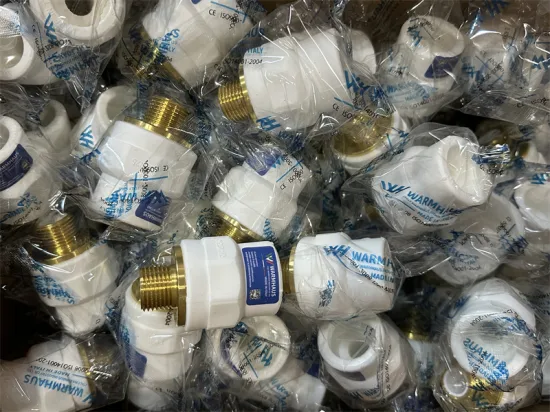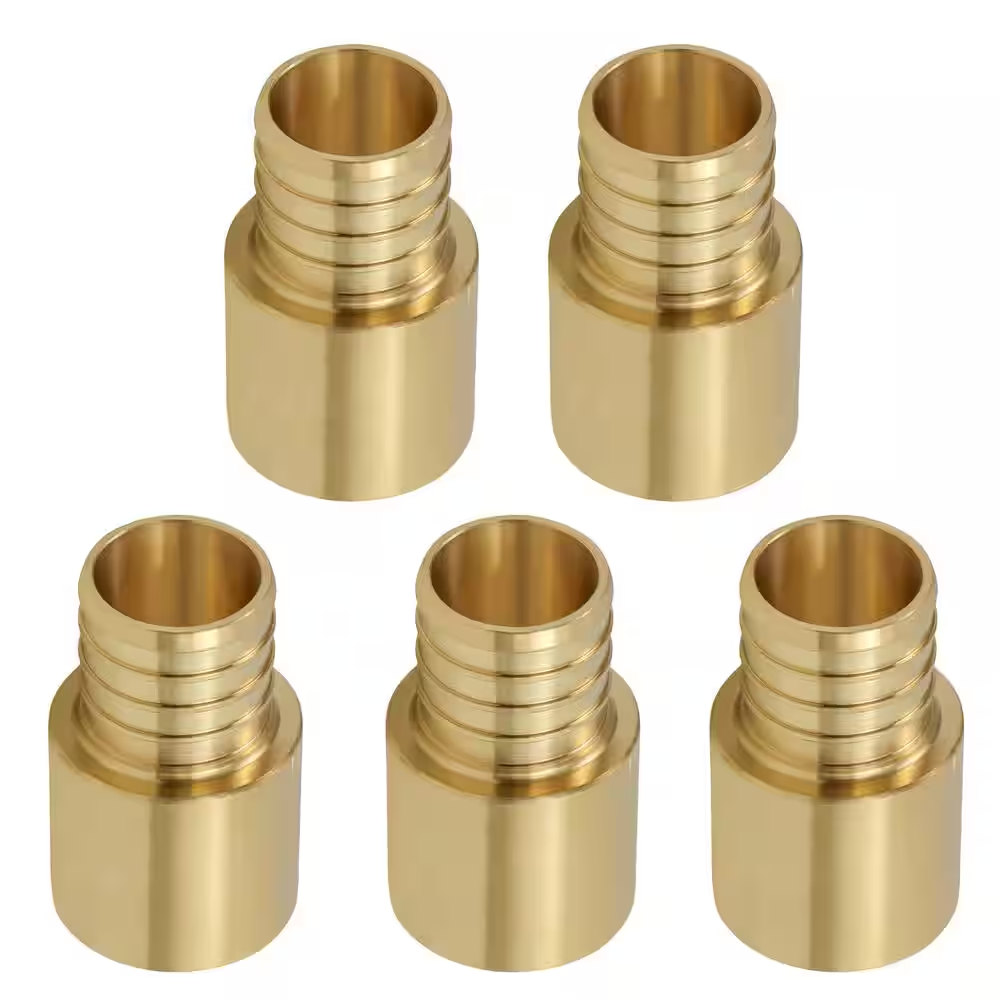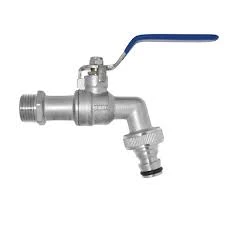Introduction to Brass Compression Fittings for Copper Tube
Brass compression fittings DIN 16833 for copper tubes with brass olives are essential components in plumbing and heating systems. These fittings are designed to create a secure, leak-proof connection between copper tubes without the need for soldering or welding. The inclusion of a brass olive (also known as a ferrule) ensures a tighter seal, making this type of fitting highly reliable for both water and gas applications. This ease of use, combined with durability and versatility, makes brass compression fittings a popular choice for professionals and DIY enthusiasts alike.
What Are Brass Compression Fittings with Brass Olive?
Brass compression fittings consist of three main parts:
- The Compression Nut: Tightens the fitting and holds the components together.
- The Brass Olive (Ferrule): Sits between the nut and the pipe, creating a seal when compressed.
- The Fitting Body: The central part of the fitting, which houses the olive and connects to the tubing.
The brass olive plays a crucial role by compressing around the copper tube as the nut is tightened, creating a watertight or airtight seal. This simple yet effective mechanism eliminates the need for heat or specialized tools, making installation easier and safer.
Advantages of Using Brass Compression Fittings for Copper Tubes
There are several reasons why brass compression fittings with brass olives are widely used in plumbing and gas systems:
1. Easy Installation
One of the biggest advantages of brass compression fittings is their ease of installation. No need for soldering or welding means you can install these fittings with basic tools like a wrench, reducing time and labor.
2. Reliable Seal
The brass olive creates a reliable, leak-proof seal when compressed against the copper tube. This makes these fittings ideal for water and gas systems, where leaks could lead to serious problems.
3. Corrosion Resistance
Brass is naturally resistant to rust and corrosion, ensuring the fittings remain durable and functional over time, even in moist or harsh environments.
4. Reusable Connections
Unlike other types of fittings, brass compression fittings can be easily disconnected and reused if needed. This flexibility is particularly useful for repairs or modifications in plumbing systems.
5. Versatile Applications
These fittings can be used for both residential and commercial purposes, in applications like plumbing, heating, gas lines, and even refrigeration systems.

Types of Brass Compression Fittings for Copper Tubes
There are various types of brass compression fittings, each serving a different purpose. Below are some common types:
1. Straight Couplings
These fittings connect two lengths of copper tubing in a straight line. They are one of the most basic and widely used types of compression fittings.
2. Elbows
Elbows allow for a change in direction in a piping system, typically at a 90° or 45° angle. These are useful for navigating around obstacles or tight spaces.
3. Tees
Tee fittings allow for branching off a main pipe, creating two paths for the flow of water or gas. This is helpful in more complex plumbing systems.
4. Adapters
Brass compression adapters allow you to connect copper tubes to other types of pipes or fittings, such as threaded or PEX pipes.
5. Caps
Caps are used to seal the end of a copper tube, preventing any flow of water or gas. These are useful for temporarily closing off sections of a system for repairs or upgrades.
Applications of Brass Compression Fittings for Copper Tubes
Brass compression fittings with brass olives are widely used in various industries and systems due to their reliability and ease of use. Some common applications include:
1. Plumbing Systems
These fittings are often used to connect copper tubing in both hot and cold water systems. Their leak-proof nature ensures the integrity of the system, preventing water damage and waste.
2. Gas Lines
In gas systems, particularly those using copper tubes for natural gas or propane, brass compression fitting offer a secure and safe connection. The brass olive ensures there are no leaks, which is crucial in preventing gas hazards.
3. Heating Systems
In heating systems, such as those using radiators or boilers, brass compression fitting are used to connect copper pipes that carry heated water or steam. Their ability to withstand high temperatures makes them suitable for these applications.
4. Refrigeration Systems
Brass compression fitting are also used in refrigeration and air conditioning systems, where copper tubes are commonly used. Their reliable seals help prevent leaks of refrigerants, ensuring efficient system operation.
How to Install Brass Compression Fitting with Brass Olive
Installing brass compression fitting is straightforward, but it’s important to follow the correct procedure to ensure a leak-free connection. Here’s a step-by-step guide:
1. Cut the Copper Tube
Begin by cutting the copper tube to the desired length. Use a tube cutter to ensure a clean, square cut. Deburr the inside and outside edges of the tube to prevent damage to the fitting.
2. Slide on the Compression Nut and Olive
Before inserting the tube into the fitting body, slide the compression nut and brass olive onto the tube. The olive should sit about 1/4 inch from the end of the tube.
3. Insert the Tube into the Fitting
Push the end of the copper tube into the fitting body as far as it will go. The tube should be firmly within the fitting.
4. Tighten the Compression Nut
Using a wrench, tighten the compression nut onto the fitting body. As the nut is , it compresses the brass olive around the tube, creating a secure and leak-proof seal.
5. Check for Leaks
After installation, test the connection by turning on the water or gas supply. Check for any signs of leaks around the fitting and tighten the nut further if necessary.
Maintenance Tips for Brass Compression Fitting
To ensure your brass compression fitting continue to perform reliably over time, consider these maintenance tips:
- Inspect Regularly: Periodically check the fittings for any signs of leaks, corrosion, or wear. Early detection of issues can prevent larger problems down the line.
- Tighten as Needed: Over time, the fitting may loosen slightly. If you notice any leaks, carefully tighten the compression nut to restore the seal.
- Clean the Fittings: Dirt and debris can accumulate in the threads, preventing a proper seal. Clean the fittings regularly to ensure smooth operation.
- Avoid Over-Tightening: While it’s important to ensure a snug connection, over-tightening the fitting can damage the brass olive and lead to leaks.
Conclusion
Brass compression fittings for copper tubes with brass olives offer a reliable, durable, and easy-to-install solution for a wide range of plumbing, gas, and heating applications. Their ability to create a secure, leak-proof connection without the need for soldering or specialized tools makes them a favorite among professionals and DIY enthusiasts alike. Whether you’re working on a simple plumbing repair or installing a complex gas line, brass compression fittings provide the peace of mind that comes with a secure and long-lasting connection.


















